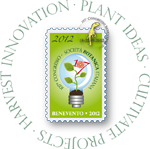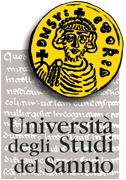Benevento 18/22 settembre 2012
107° Congresso SBI Onlus







reserved area
Symposia
Symposium I "NEW FRONTIERS IN PLANT BIOLOGY FOR ENVIRONMENTAL SUSTAINABILITY”
Pollution is the limiting factor in the welfare of future generations as the shortage of raw materials and food they have been for past generations. The fight against pollution through the monitoring, prevention, abatement and rehabilitation of existing critical situations. To achieve these objectives will be deploying "green" technologies impacting and very little sustainable. The objective of this symposium is, therefore Congress to illustrate and compare the results of research conducted by international and national institutions in the field of "science of green technologies for the environment." We discuss, in particular, technologies for the decontamination of soils and waters polluted by heavy metals or persistent organic compounds using different species of plants. In addition we will address the topic of biofuels and bioenergy production from biomass, and carbon sequestration and greenhouse gases with different solutions, all related to the green world.
Symposium II "PLANTS AS BIOFACTORIES: SCIENCE AND TECHNOLOGY"
The plant has always been an important reserve of useful substances to human health. But even more now plants offer great potential for the production of molecules of great interest to the pharmaceutical industry. Plant biotechnology plays a crucial role in obtaining products of secondary metabolism and even more recombinant molecules such as vaccines, antibodies, peptides with antimicrobial activity, useful for human health. The use of modern biotechnology opens new research perspectives highly motivating in several laboratories around the world and an area for fruitful frontier of interactions between different disciplines. It 'has been estimated that the total value of the "Plant Made Pharmaceuticals" is 40 billion euros in 2010. In this Symposium will present research demonstrating the potential national and international science and technology represented by the main public bodies (universities) and private (industries) involved. Compared to production systems already in use by the pharmaceutical industry, the plants have several advantages such as lower cost, greater production of even complex molecules and the absence of pathogens or toxins dangerous to humans.
Symposium III " PLANTS AND BIOTIC INTERACTIONS "
Communication between different organisms is always made very complicated by the difficulty of synchronizing the intentions of the issue of the signal with the response it generates. This is even more complicated when the communication channels are established between bodies widely spaced as plants, animals and fungi because in that case there is often a considerable difference between the body which emits the signal and the one that receives it (and the interpretation which is given). The plants emit signals to overcome their lack of mobility that creates a physical obstacle to their potential to acquire resources, defense against predators, disperse their genes. This obstacle is usually overcome by the evolution of mutualistic relationships with other organisms mediate the development of specific channels of communication While in the past, much interest has been placed on exploring the evolution of signals and channels of communication between animals in times recent signals between plants and other organisms have attracted increasing attention thanks to the discovery of new and unexpected possibilities in the "Statement of plants."
Symposium IV “BIODIVERSITY AND LANDSCAPE "
The plant biodiversity is the most important component of the biosphere because it is the basis of the functioning of ecosystems. The loss of plant biodiversity is likely to irreparably compromise the resources that ecosystems provide to humanity. Preserving biological diversity is the cornerstone of conservation biology and rotate around it many implications scientific, ethical, social and economic. Biodiversity is in fact considered a value, which however is threatened by technological development and production. If the concept of 'Biodiversity' means the different levels of richness of life forms in the territories of our planet, the 'Landscape' can also be seen as parallel, and the way different people perceive the character and identity of space organizations of these territories. Their character derives from the natural and / or humans and their interrelations, as is evidenced by the European Landscape Convention (Florence, 2000). For 'Landscape Protection' will indicate actions to conserve and maintain the significant or characteristic features of a particular landscape, justified by its heritage value derived from its natural configuration and / or type of human intervention.
Symposium V "SUSTAINABLE INFRASTRUCTURE FOR THE PROTECTION OF BIODIVERSITY”
Infrastructure can be defined as a system that is among the things, a system that connects and builds relationships, which technically innervates the landscape. According to many, the phrase "sustainable infrastructure" be an oxymoron for a long time. This representation is disjoint support in the approach, still very current, between the engineering and technical evaluation of a given work and evaluation of infrastructure and natural environmental resources. In fact, while it is growing sensitivity towards systems less impact and more eco-oriented infrastructure for the mobility is still an aspect of greater interference on the landscape. The inclusion of a new path infrastructure is often disconnected from the future relationship with the land changed, except for the following mitigation measures limited to certain aspects, such as noise pollution, air and water, or generic interventions to green. With this approach, mobility and landscape are two entities that coexist, but complement each other. Sometimes, indeed, repel, relegating the landscape in a matter of aesthetic perception, and laying the groundwork for future fragmentation, isolation and drift of an environment more hospitable to non-native species, including man. The consequences of this amplification of the infrastructure for mobility do not arise only in terms of space taken away, but also fragmentation of various actions of noise, pollution, and hydrogeomorphological disruption direct impact on the landscape and natural areas related.
© società botanica italiana onlus



